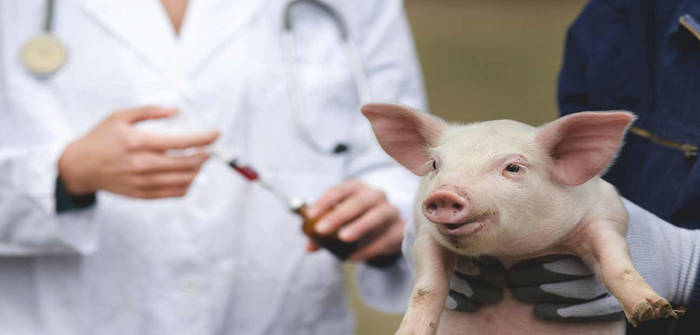The release of the 2017 antibiotic usage figures has highlighted the work done by producers and their vets to reduce use in the pig sector, and congratulations are certainly in order, writes Mandy Nevel.
Nevertheless, we mustn’t be complacent and it’s important that you continue to enter your data onto the electronic Medicine Book (eMB). The focus must now shift from ‘reducing’ to that of ‘responsible’ use. What does this mean and how do we do that?
Antibiotics are necessary to ensure the welfare of animals – pigs, particularly young weaners, do get sick and if antibiotics are part of the treatment, we need to make sure they get them. However, antibiotics must be justified.
We must ensure the correct antibiotic at the correct dose for the correct duration to the correct pig(s) is given. We all know prevention is better than cure, and antibiotics to cover for poor prevention is a thing of the past. Pig medicine is very different to what it was 20 or 30 years ago. We face a number of pig viruses (PRRS, porcine circovirus type 2 and swine influenza) that were not present then.
These viruses reduce the pigs’ ability to fight other diseases (immune-compromising), including bacterial diseases that need antibiotics for treatment. These viruses, as well as the pressures to reduce antibiotics, have changed pig veterinary medicine dramatically.
Our practising vets have taken the challenge on board and, I am proud to say, have led the change and encouraged producers, when safe, to refine antibiotic use.
As we move to responsible use, the industry will have to control diseases that we encounter every day in the UK – our endemic diseases. As well as viruses, there are other bacterial diseases like enzootic pneumonia and meningitis. Control of these diseases will reduce repeated antibiotic use to allow more responsible use – only where disease cannot be controlled.
The Government has indicated it will help the industry tackle endemic diseases and has indicated its intention to increase the number of pigs raised with intact tails. We must ensure we have plans in place to assess the risk of tail-biting and evidence of any incidence.
AHDB has a number of tools to help – for example, do you use the eMB to record individual cases of tail-biting that need treating? Also, the WebHAT is a website designed to be an interactive resource providing information about the key risks for tail-biting in pigs.
P.S. Congratulations to our new animal science and veterinary graduates entering the pig sector – I look forward to working with you!
Mandy Nevel is AHDB’s senior veterinary manager and a former lecturer at the Royal Veterinary College




